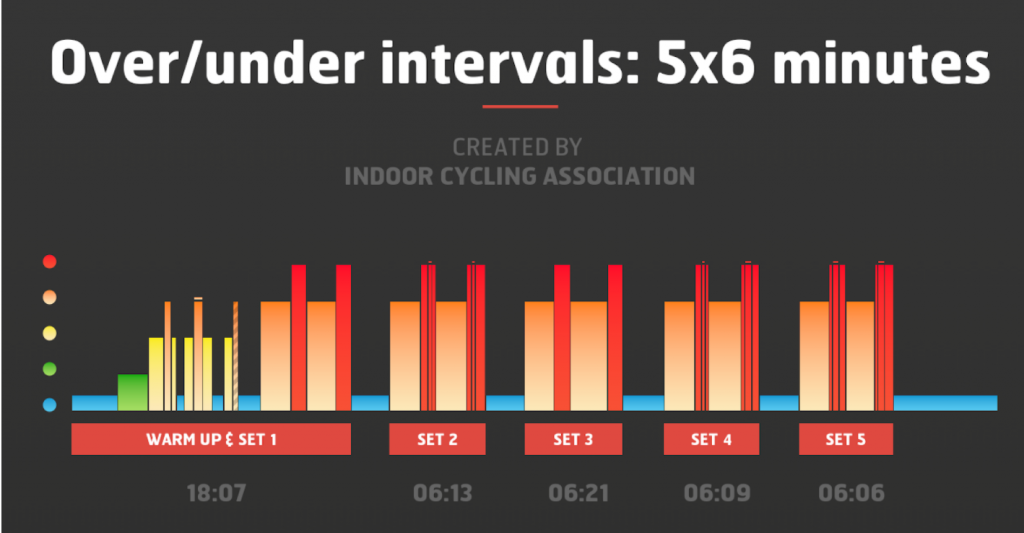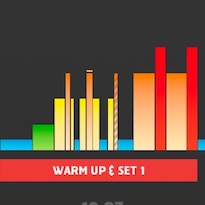This is an interval profile based on working just below and just above your functional threshold power. While this is a power-based profile, that doesn’t mean you can’t do it as a challenging interval ride based on perceived exertion or lactate threshold heart rate. Without power, however, it’s just a hard workout. Nothing wrong with that—it’s still a fun ride and one your riders will remember you for!
Whether you choose to share with your riders the science behind a workout like this or not, you can be assured that it’s one of the more beneficial workouts in your repertoire. Obviously, it’s beneficial for instructors to know the adaptations that a certain workout elicits. Personally, I love to share the science behind the cycling with my classes, but I do it in small amounts and try not to overwhelm them. Over the many years I’ve been doing that, I’ve received many thanks from my riders for informing them. You would be surprised at how appreciative your participants will be when you help educate them. They are also much more likely to adhere to the profile targets when they know how it’s going to benefit them and their personal goals.
With that, let’s dive into the science of this kind of a workout.
There are numerous beneficial physiological adaptations behind a structured workout like over/under intervals. When training around the lactate threshold, LT is improved and, as a result, FTP can be improved. Lactate threshold, or maximal lactate steady-state, is the intensity at which lactate production is equal to lactate removal. When you push above the LT, as in the 1-minute surges over FTP, the muscles are flooded with excess lactate and other metabolic by-products. This causes the discomfort that comes with pushing that little bit harder.
Then when you drop down to just below FTP, the body is forced to work more quickly to process the excess lactate and other by-products. This is known as the lactate shuttle, which is the process of moving lactate produced by the working muscles into other body tissues for use as fuel (brain, heart, and back into the mitochondria). The goal of the drills in this workout is to improve the body’s efficiency to shuttle lactate by building up an abundance of it to stimulate an increase in lactate transporter proteins.
Improving the lactate shuttle is one of the physiological adaptations that helps improve endurance at this intensity and is why this type of training session is so valuable. When the lactate threshold is improved and riders can train harder for longer, more kilojoules are consumed, which translates to higher caloric consumption. While this is not important to athletes, it is something that our non-competitive participants care about.
As you can see, this is a workout for both your outdoor riders—whether they are competitive or not—as well as your indoor riders who are more concerned with improving fitness and losing weight.

Intelligent Cycling App
This profile has been uploaded to the Intelligent Cycling app.
If you have access to the Intelligent Cycling app, you can find the link to this profile below, not in the app. (It is a private link just for ICA instructors so it won’t be available under public profiles in the app.)
If you don’t have the app yet, you can find it at intelligent-cycling.com.


I taught this today….awesome!! Got a great response from my virtual riders. Thank you for another awesome profile & the science behind it!